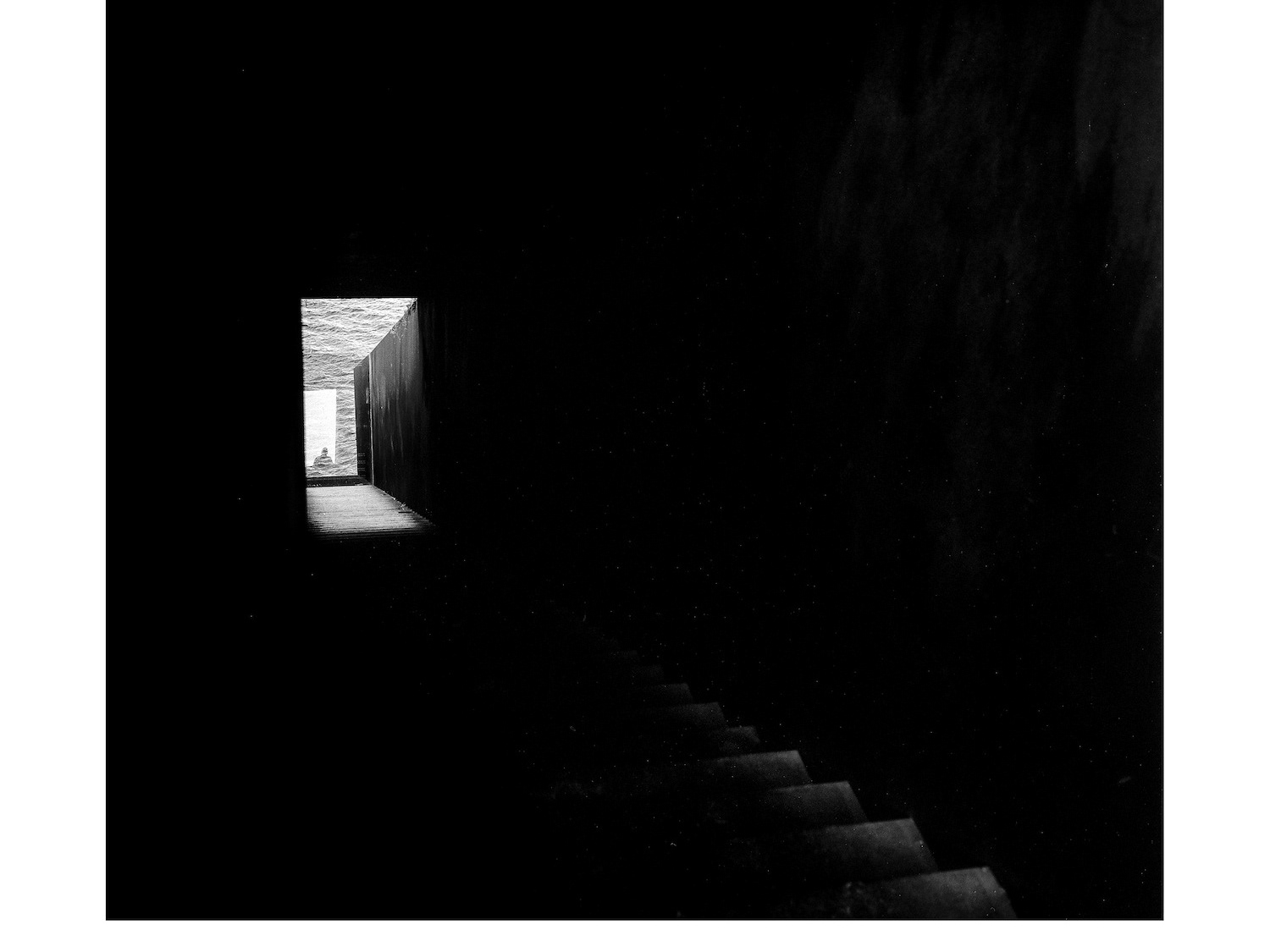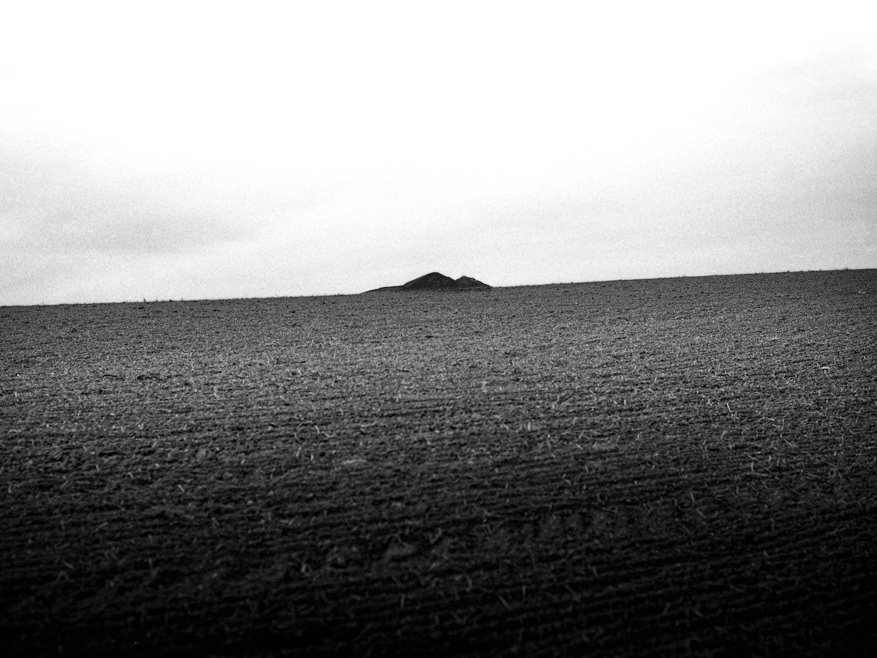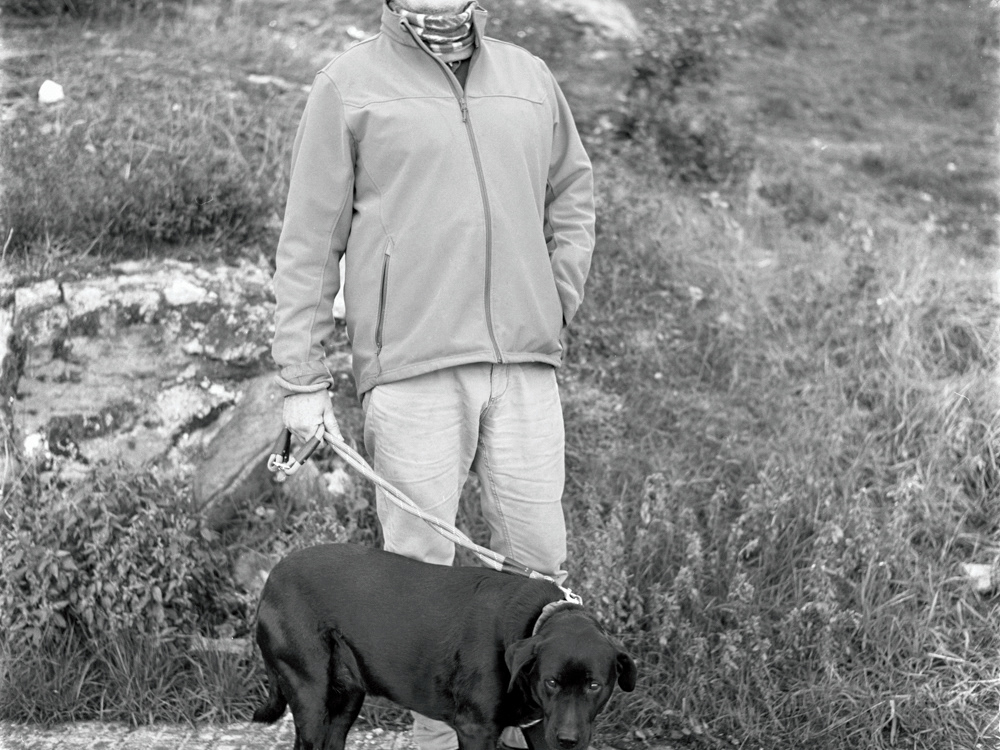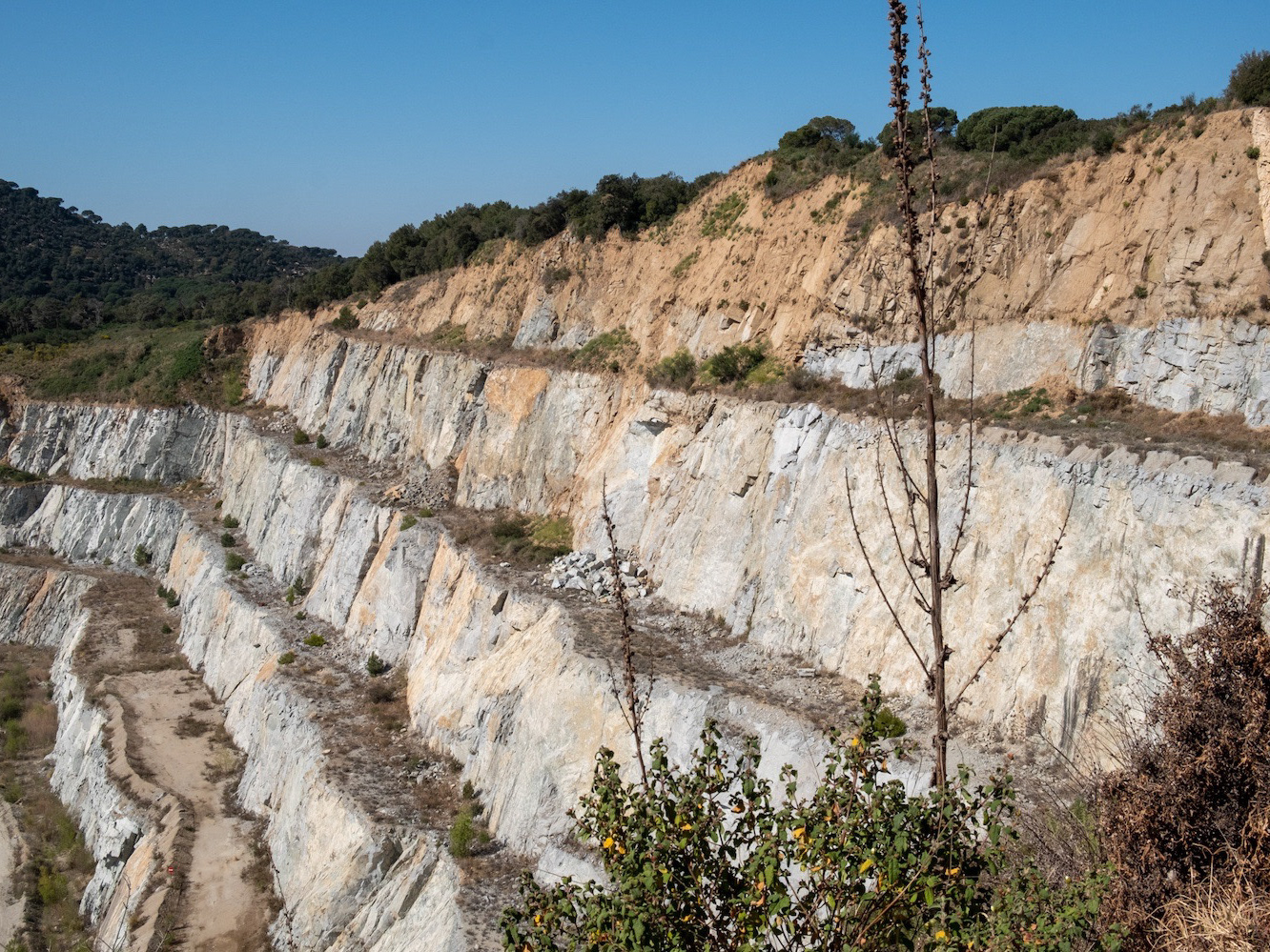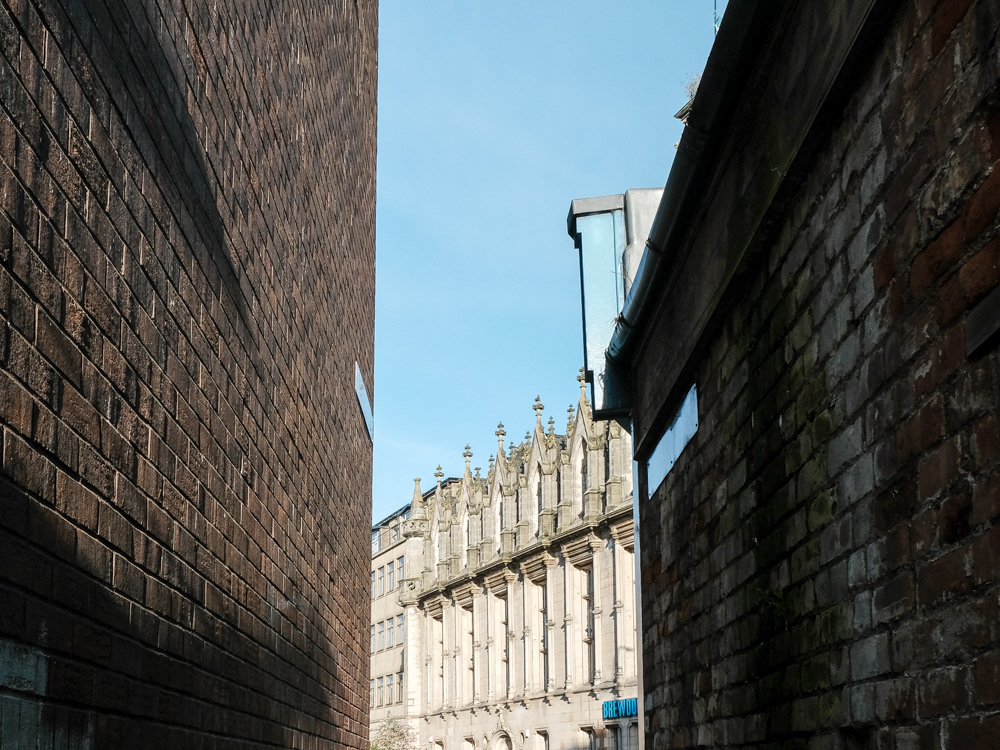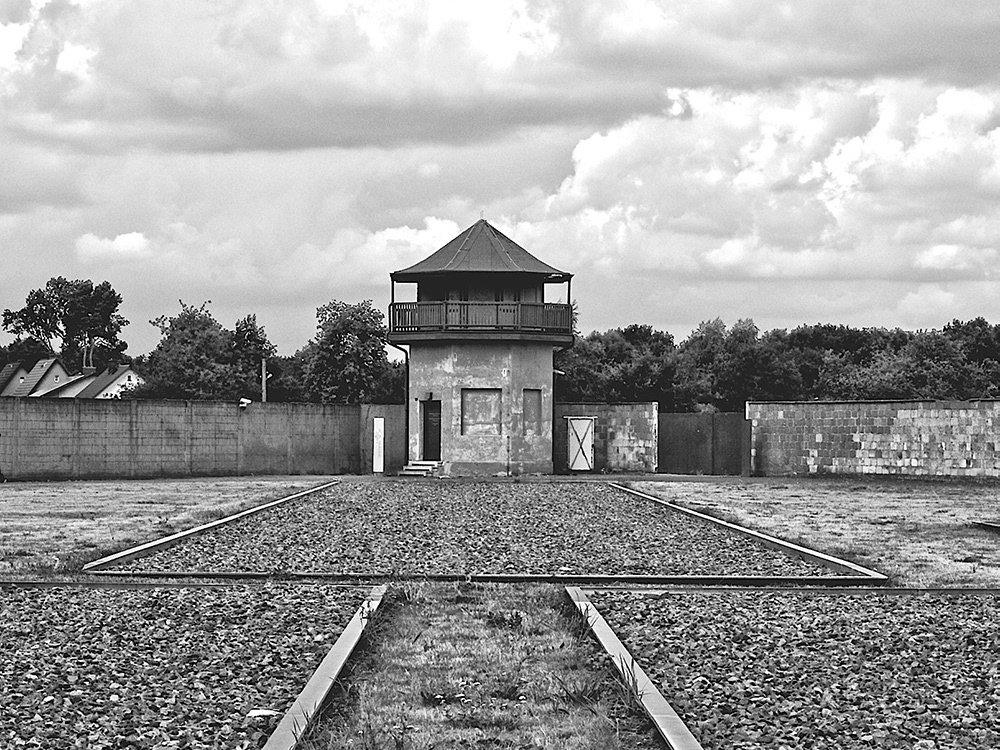

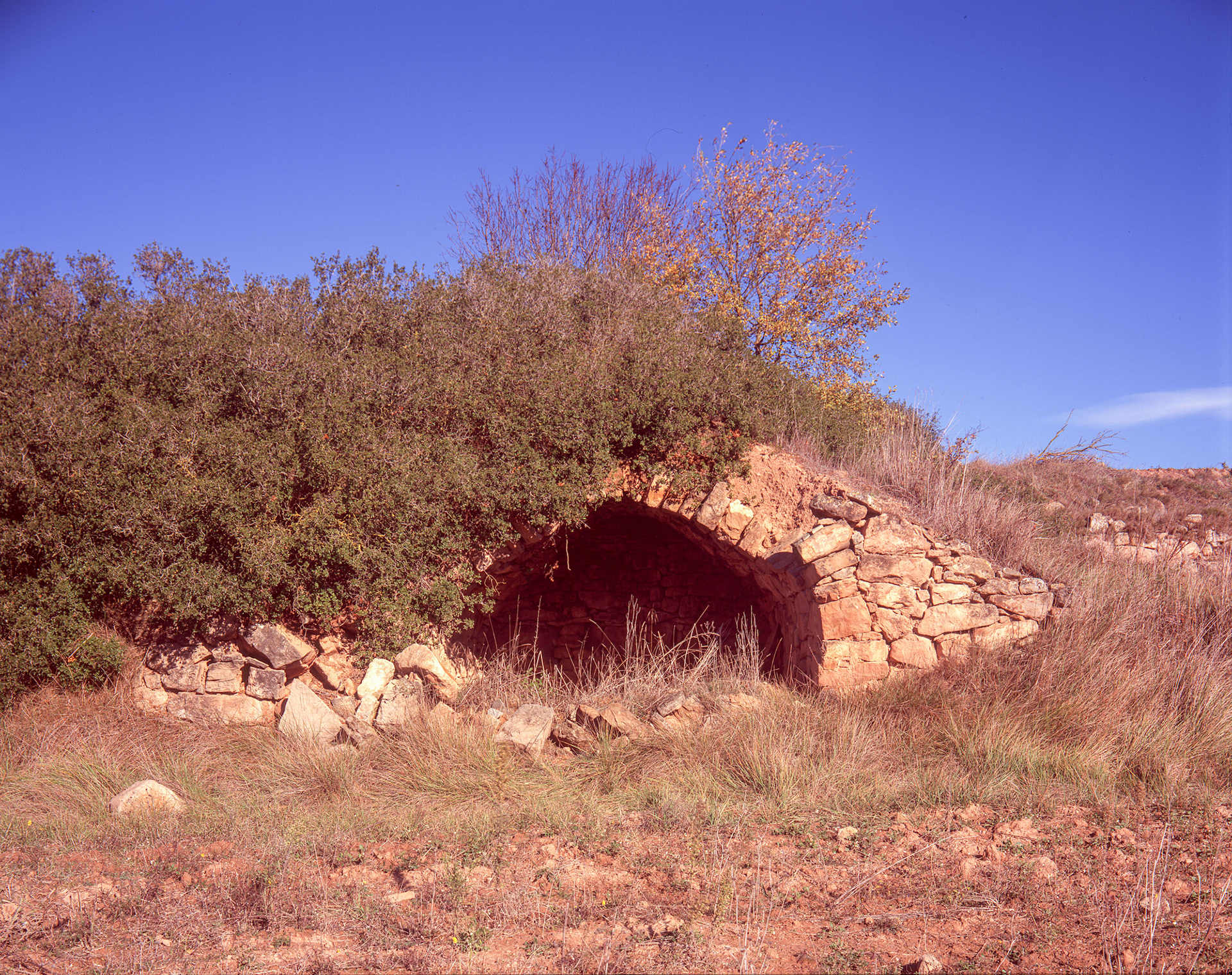

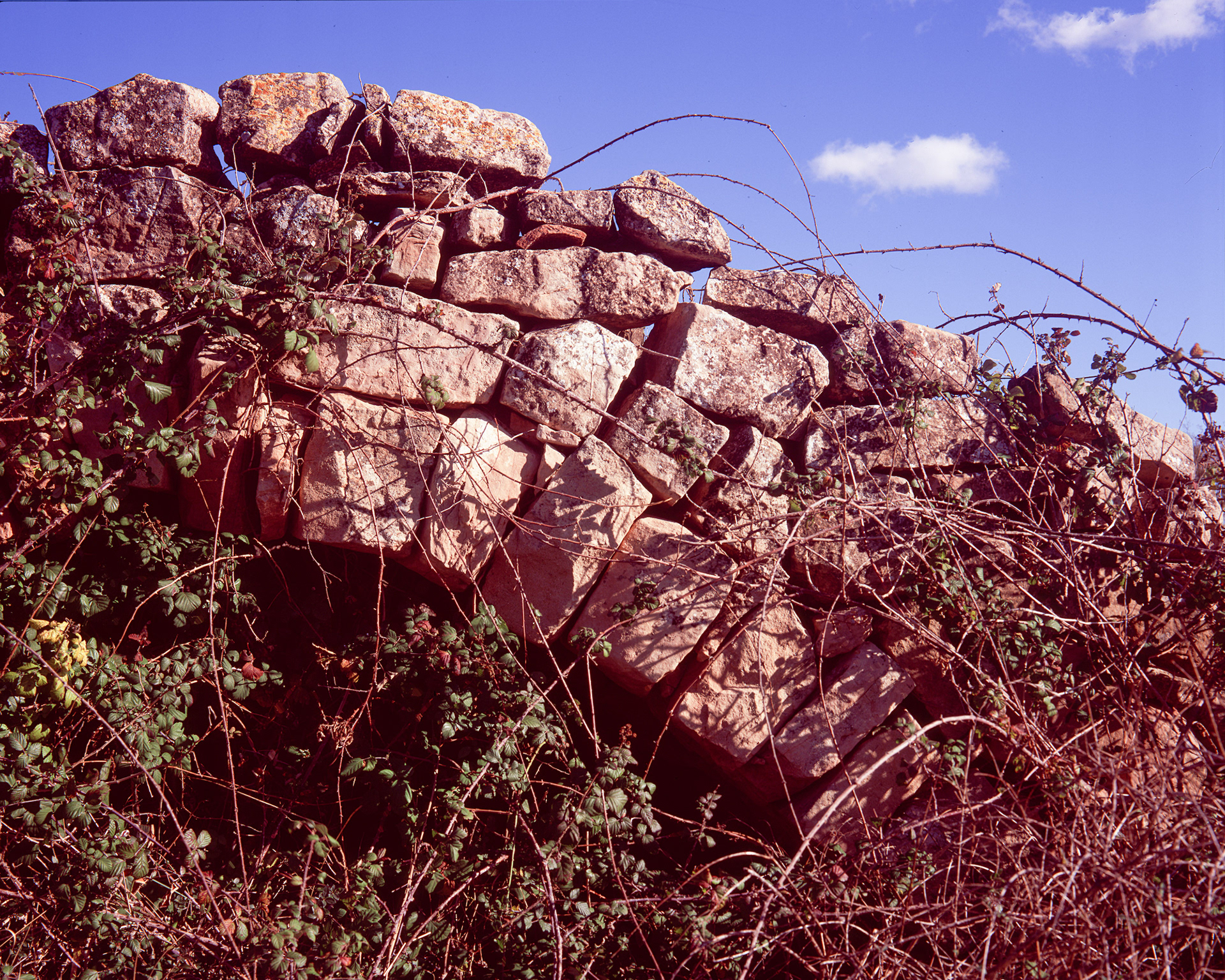


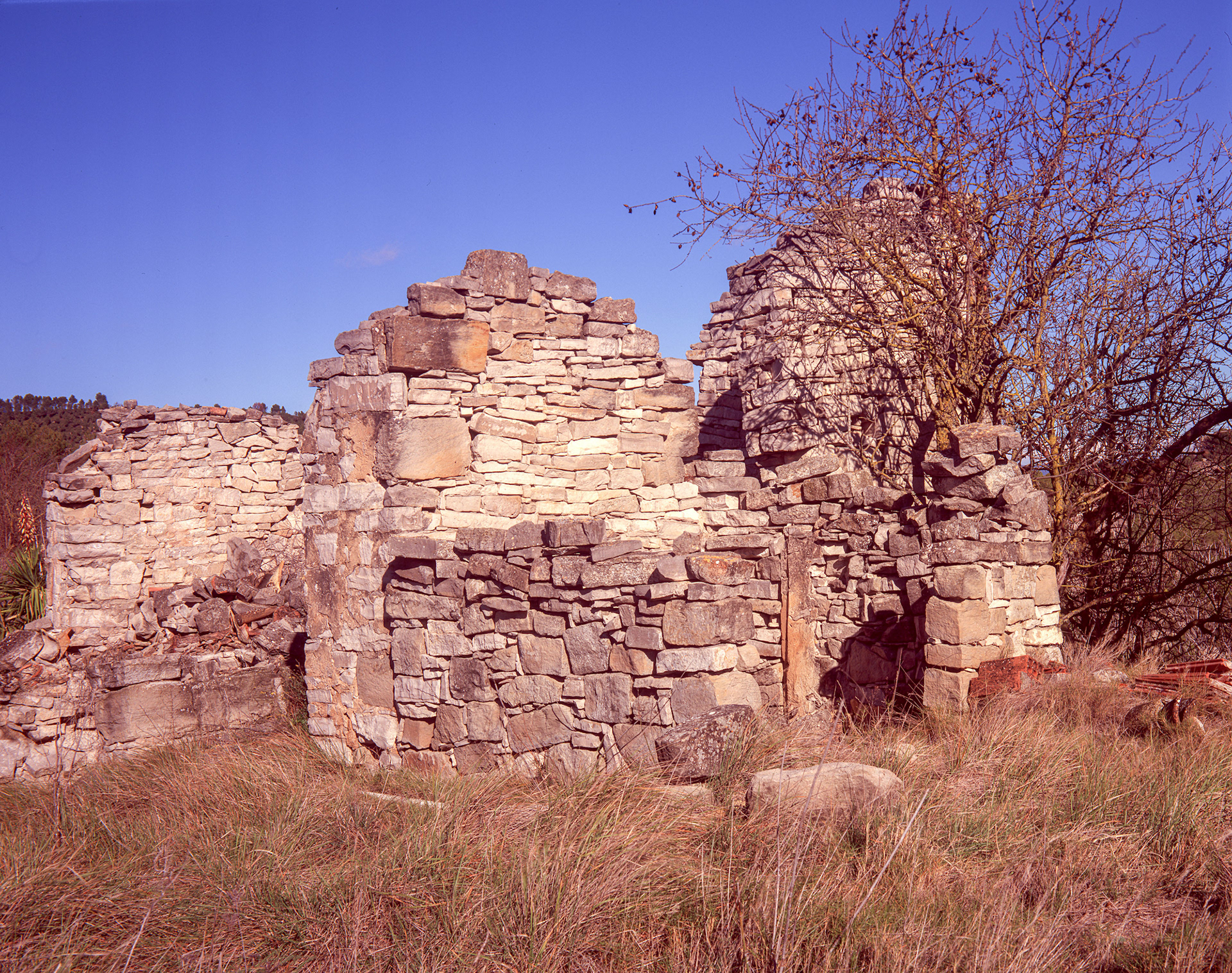
INTEGRACIÓ INVISIBLE
“Prou voldria [l’Àngel de la Història] aturar-se, despertar els morts i reparar la destrucció. Però des del paradís ve un vent de tempesta que (…) l’empeny de manera imparable cap el futur, al qual dona l’esquena, mentre davant seu la pila de runes s’enfila cap el cel. El que nosaltres anomenem progrés és aquesta tempesta.”
Benjamin,W (2019). Sobre el concepte d’història (M. Jiménez Buzzi, Trad.). Flâneur (Obra original publicada el 1940)
Des de la seva perplexitat per com la pedra seca vincula aquest projecte amb l’anterior que va realitzar - el darrer viatge de Walter Benjamin - l’autor inicia el rastreig sobre els mapes i se n’adona de la immensitat d’aquest tipus de construccions a casa nostra. Posteriorment, sobre el terreny, constata una evidència: la Natura està recolonitzant l’obra humana i hi veu dues conseqüències: a) s’està perdent un patrimoni, i b) aquesta pèrdua es fa mitjançant un procés natural. La seva aportació a aquesta mirada forana sobre el domini de la pedra seca incideix en aquests dos aspectes.
Joan Sorolla no vol entrar aquí en el debat sobre una hipotètica recuperació (o no) de les construccions de pedra seca sinó que ens vol fer reflexionar sobre el fet que aquest deteriorament és un procés que va lligat a la nostra història. Quan imaginem aquests camps amb murs ferms i cabanes acollidores i els veiem ara desballestats, palesem que el sistema econòmic ha evolucionat, retroalimentant-se amb la tecnologia, i ha fet canviar el modus de vida. És el propi sistema econòmic qui acaba configurant el paisatge: dels camps plens de pagesos vam passar a les fàbriques i d’aquí a les grans carreteres, als polígons i als centres comercials.
Amb aquestes imatges veiem com la Natura està reciclant allò que nosaltres hem abandonat. Ho vam crear de la terra i allà és on torna. L’autor ens ho ensenya amb cabanes que ja no es veuen perquè el llentiscle o els esbarzers les han amagat o amb murs que els arbres, lentament, van desmuntant. Ens ho ensenya en color, però amb un color que s’altera per efecte d’un temps que la pel·lícula analògica -en aquest cas, caducada de fa deu anys - incorpora químicament.
No ens hem de quedar, però, amb la tristor per la destrucció sinó en la saviesa dels nostres avantpassats i avantpassades autors d’aquest patrimoni ancestral que sembla que porti data de caducitat. El cert és que aquestes construccions deteriorades ens recorden que tot és efímer i està en evolució però compte: no ens parlen només del passat i del present sinó també del futur.
Ricard Espelt. Text per a l'exposició col·lectiva "Nit de pedra seca" al FineArt (Igualada, 2022)
____________________________________________________________________________________
"He [The Angel of History] would like to pause for a moment so fair, to awaken the dead and to piece together what has been smashed. But a storm is blowing from Paradise, it has caught itself up in his wings and is so strong that the Angel can no longer close them. The storm drives him irresistibly into the future, to which his back is turned, while the rubble-heap before him grows sky-high. That which we call progress is this storm.”
Benjamin,W (2019). On the Concept of History. (Dennis Redmond, trans.) Under Creative Commons (Attribute & ShareAlike) license. (Obra original publicada el 1940)
From his perplexity about how dry stone links this project with the previous one he did - Walter Benjamin's last journey - the author begins to trace the maps and realises the immensity of this type of construction in Catalonia. Subsequently, on the ground, he sees evidence: Nature is recolonising the human work and sees two consequences: a) a heritage is being lost, and b) this loss is carried out through a natural process. His contribution to this foreign view of the mastery of dry stone has a bearing on these two aspects.
Joan Sorolla does not want to enter here into the debate about a hypothetical recovery (or not) of dry stone constructions, but rather he wants to make us reflect on the fact that this deterioration is a process that is linked to our history. When we imagine these fields with firm walls and cosy huts and now see them in ruins, it shows that the economic system has evolved, feeding back into technology, and has changed the way of life. It is the economic system itself that ends up shaping the landscape: from fields full of peasants we move on to factories and from there to large roads, industrial estates and shopping centres.
With these images, we see how Nature is recycling what we have abandoned. We create it from the earth and that is where it returns. The author shows us with huts that can no longer be seen because the mastic trees or brambles have hidden them or with walls that the trees are slowly dismantling. He shows it to us in colour, but whose colour is altered by the effect of time, which the analogue film - in this case, out of date for ten years - incorporates chemically.
We should not, however, be saddened by the destruction, but rather we should look to the wisdom of our forefathers and foremothers, the authors of this ancestral heritage, which seems to have an expiry date. What is certain is that these deteriorated constructions remind us that everything is ephemeral and evolving, but they speak to us not only of the past and the present but also of the future.
Ricard Espelt. Text for the group exhibition "Nits de pedra seca" ("Nights of dry stone") at FineArt (Igualada, 2022). Translated with www.DeepL.com/Translator (free version)

